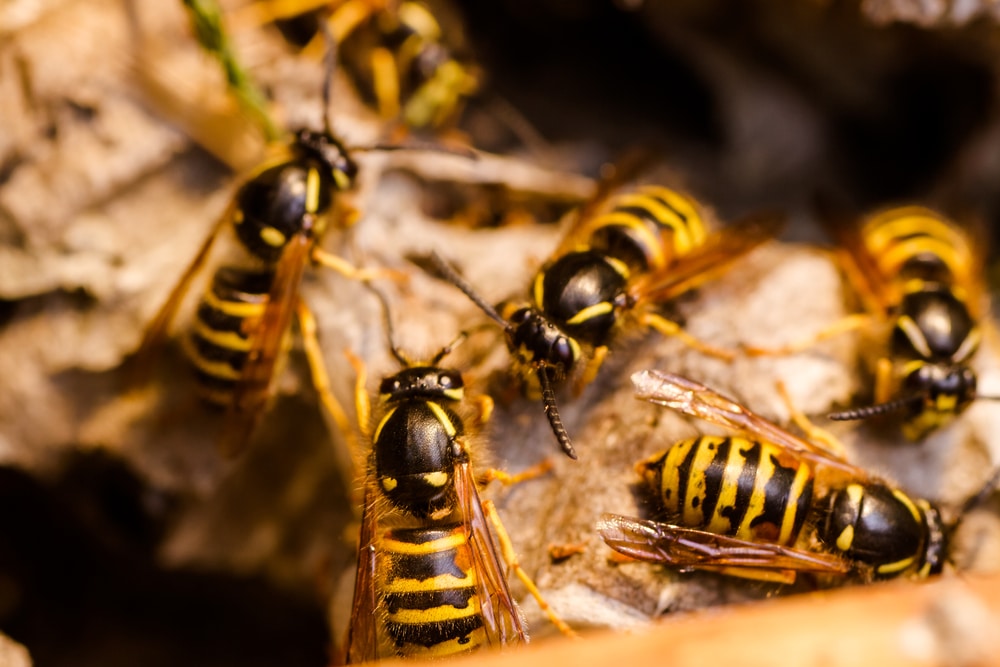Wasp Removal

Stinging Insects and Wasp Removal
Depending on the location, the formation of a beehive or stinging insect nest can be a welcome addition or cause for concern.
Some bees, paper wasps, and hornets may build nests in attics, walls, under eaves, in soffits, under porches, and in tree branches. Other insects such as yellowjackets and some bees build their nests in the ground.
Social insects such as honey bees, hornets, yellow jackets, and paper wasps can build colonies containing thousands of workers. These insects will defend their nests.
Although a simple sting may not affect you too much, 5-7% of the popular are highly allergic to stinging insects. What’s worse is if you stumble across a hidden hive in the ground or one camouflaged in a tree, you could get attacked by a swarm.
If the entire hive feels threatened, they will swarm together, fly after an intruder, and attack all at once.
We can safely remove any stinging insect nests and hives including wasps, bees, yellow jackets, hornets, and paper wasps.
Many types of biting and stinging insects live in large colonies, including fire ants and eusocial species of bees, hornets, and wasps. Fire ants nest in the ground and often produce a visible mound that marks the entrance to their colony. Certain species of wasps and hornets also live underground, while others reside in aerial nests or hives.
While biting insects like bed bugs, fleas, and mosquitoes frequently infest areas in large numbers, their nesting habits are far less structured than those of bees or fire ants. Bed bugs live in cracks, crevices, and mattresses in rooms where humans or pets sleep at night, while fleas typically spend the majority of their adult lives on a host animal. Mosquitoes live outdoors, where they breed in stagnant water.
Controlling biting and stinging insects can be challenging due to the safety hazards they present. Certain species of wasps and hornets will defend their nests aggressively, while fire ants swarm in large numbers when they detect a threat. Even when biting and stinging insects are safe to handle, they can still be hard to control. Bed bugs, for instance, are relatively harmless but notorious for being difficult to eradicate because of their small size and elusive nature.
The primary causes for concern over biting and stinging insects are the bites and stings these pests inflict on humans and other animals. Bites from mosquitoes, bed bugs, and fleas produce reddish welts on the skin that itch and irritate, while beestings can be painful and may also cause localized swelling and irritation. In especially severe cases, the venom that bees, hornets, and wasps inject when they sting can trigger the onset of anaphylactic shock. Similarly, mosquito bites have the potential to escalate in severity, as the pests can spread diseases such as dengue fever, malaria, and West Nile Virus. They also carry and transfer the larvae that cause heartworm in dogs.
A wasp infestation can cause damage to your property and can be difficult to manage, with risks and legalities to consider before you begin. We recommend professional wasp removal to reduce the risk of harm to you or your home, keeping both your loved ones and your wildlife neighbors safe.
If you need professional wasp removal, contact Wildlife Damage Solutions today.

